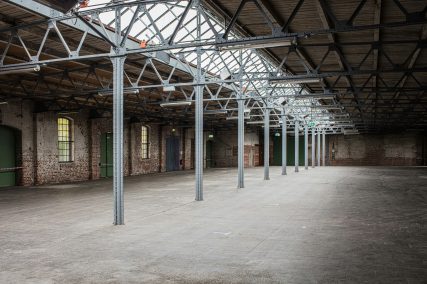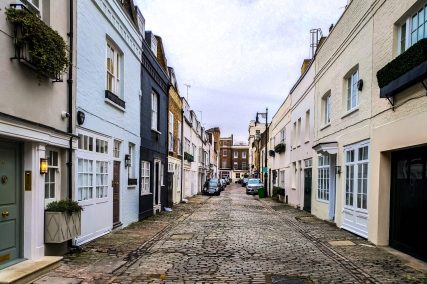What are the differences between a Holiday Let and a Buy-to-Let (BTL) property?
For savvy property investors, the UK market offers a range of investment opportunities with Holiday Let and Buy-to-Let (BTL) properties being two of the most popular. While both options involve renting properties for income, they cater to very different types of tenants and come with distinct differentiations. The following article will break down what each type of property investment entails, how they differ and key considerations to think about before making a decision.
What is a Buy-to-Let (BTL) Property?
A Buy-to-Let property is a residential property purchased with the intention of renting it out to long-term tenants. Typically, rental agreements for BTL properties are secured through an Assured Shorthold Tenancy (AST) which usually lasts for six months or more. This type of property is designed to provide stable, ongoing rental income, and tenants generally use it as their primary home.
BTL properties are widely seen as a popular option for investors looking for a steady source of passive income and long-term capital appreciation. Depending on what type of clients you accept, they can be single-family homes, flats or houses of multiple occupation (HMOs).
What is a Holiday Let Property?
A Holiday Let property, also known as a short-term rental, is a property rented out to holidaymakers or tourists on a short-term basis, typically for a few days or weeks at a time. Think along the lines of ‘staycations’ – they are ideal properties to rent out for a long weekend/short-trips.
These properties are often located in desirable tourist locations such as coastal areas, countryside retreats or city centres, where there is high demand for short-break stays.
Unlike a BTL, holiday let properties are usually furnished and fully equipped, offering guests a home-away-from-home experience. They tend to generate higher rental income during peak seasons, but can also experience longer periods of vacancy during off-peak times.
What are the key differences between a Buy-to-Let and a Holiday Let Property?
1. Rental Duration and Tenant Type
- Buy-to-Let: Designed for long-term tenants, BTL properties are rented out for six months or more. The tenant typically uses the property as their primary residence.
- Holiday Let: These properties cater to short-term visitors, for example holidaymakers, tourists, and business travellers. The properties are typically furnished and provide serviced facilities.
2. Financing Requirements
- Buy-to-Let Mortgage: BTL properties require a buy-to-let mortgage, which is structured around long-term tenancies. Lenders typically demand a larger deposit (20-40%) and calculate affordability based on expected rental income. Typically, BTL mortgages don’t allow short-term letting.
- Holiday Let Mortgage: Investors in holiday lets need a holiday let mortgage, which is designed to accommodate short-term rental income. Lenders often impose specific conditions, such as the property being available to let for at least 210 days per year, and being rented out for a minimum of 105 days.
3. Income Potential
- Buy-to-Let Income: While BTL properties generally provide stable and predictable rental income, the yields are often lower compared to holiday lets. However, rental voids (periods when the property is not rented) are less frequent in BTL properties.
- Holiday Let Income: Holiday lets can command significantly higher rental rates during peak holiday seasons, especially in popular tourist destinations. However, income can be more volatile, as properties may remain unoccupied during off-peak seasons.
4. Management Requirements
- Buy-to-Let: BTL properties require relatively low levels of management. Once tenants move in, landlords typically handle occasional repairs, cosmetic touch-ups and tenancy agreement renewals. Many investors opt for property management services. They will handle day-to-day issues such as rent collection, chasing and maintenance.
- Holiday Let: Managing a holiday let can be far more time-intensive. Due to frequent guest turnover, these properties require regular cleaning, maintenance and booking management. Property owners may need to invest in holiday let management services or use booking platforms like Airbnb to market the property and handle guest logistics.
5. Regulatory and Licensing Requirements
- Buy-to-Let: Landlords of BTL properties are subject to various regulations, including gas safety checks, electrical inspections, and obtaining an Energy Performance Certificate (EPC). In some areas, landlords must also apply for a landlord licence.
- Holiday Let: Holiday lets may require planning permission in certain areas, especially where local councils have introduced restrictions due to the popularity of short-term rentals. Additionally, holiday lets must comply with more stringent safety regulations, including fire risk assessments and public liability insurance.
6. Insurance
- Buy-to-Let Insurance: BTL properties require specialised landlord insurance, covering the building, contents (if the property is furnished), and liability protection in case of tenant-related claims.
- Holiday Let Insurance: Holiday lets need specific insurance that covers risks associated with short-term stays, including accidental damage by guests and public liability for short-term visitors.
Which Investment is Right for You?
Choosing between a buy-to-let and a holiday let depends largely on your investment goals, location, and risk tolerance.
Clients may choose to invest in buy-to-let properties because they can provide steady, predictable rental income with relatively low management. It’s a good investment strategy for clients with properties in city centres/urban areas or regions where there is high demand for long-term rentals, for example University locations. Holiday Let properties are more appropriate for those looking for higher rental yields and who are prepared to handle the additional management demands and potential income volatility. Holiday lets are particularly attractive in tourist-heavy areas where demand surges during peak seasons. London, is naturally a very attractive location for holiday-let properties, as well as places like the Cotswolds, Cornwall and Devon.
Both holiday let and buy-to-let properties can be highly lucrative, but they require different levels of involvement and management. Whether you’re looking to add a stable, long-term rental income to your portfolio, or you are interested in capitalising on the booming holiday rental market, Wharf Financial is here to help guide you location, market demand and your financial viability before investing.
With the right planning and preparation, either type of property can provide a solid return on investment. To add this valuable asset to your portfolio, and see how financing this type of investment can work to your advantage, call 0208 895 6677 or speak to our expert team today.












